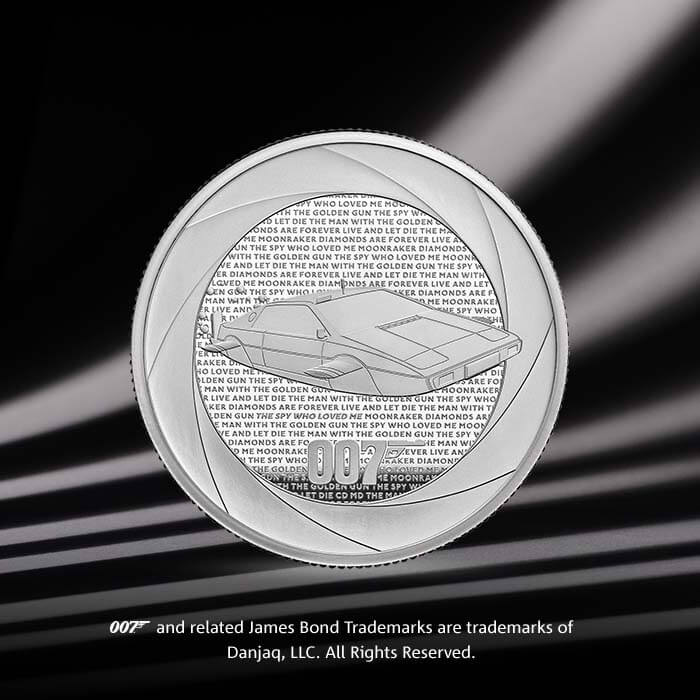Having made his cinematic debut in the 1960s, James Bond was a firmly established character on the big screen by the time the decade came to a close.
In fact, with six films already released, James Bond had quickly become a Hollywood icon and the franchise itself had established its own inimitable style, conventions and cinematic traits, from the gun barrel openings and psychedelic title sequences to witty one-liners and ingenious gadgetry.
As the calendar rolled over into the 1970s, James Bond was preparing to embark on an evolution in terms of both presentation and character. However, first, the Bond franchise would look to the past to relaunch the series with a bang following George Lazenby’s turn as Bond in On Her Majesty’s Secret Service.

The original big screen James Bond, Connery was a popular choice for the return of 007 in Diamonds Are Forever. However, he wasn’t the only throwback to the Bond of the 1960s. Bond’s legendary arch-nemesis Ernst Stavro Blofeld reappeared as the movie’s chief antagonist, whilst Goldfinger director Guy Hamilton returned to 007 directorial duties to further re-establish the familiar Bond flavour that fans had become accustomed to prior to the 1960s.
After Sean Connery’s final appearance as 007 in Diamonds Are Forever, EON set their sights on a new guardian of the Bond franchise – an actor that could not only fill the void left by the charismatic Scotsman, but one that could take the franchise to new heights throughout the seventies and beyond. That replacement came in the form of clean-cut Englishman Roger Moore. Suave, sophisticated and exuding debonair charm, Roger Moore was a proven commodity from his time as Simon Templar in the popular TV show The Saint.
Outside of the actor in the tuxedo, the Bond movies of the 1970s were also very much a reflection of the period in which they were made. As the decade progressed, it saw the British superspy enter a new era of cinema where restrictions on language, violence and adult themes began to ease. In addition to continuing the 007 legacy established in the 1960s, the Bond films of the following decade were very much an example of cinematic evolution, often influenced by what was popular at the time.
As the Bond films transitioned from the distinctive style of 1960s cinema, the presentation shifted in the 1970s by incorporating movie trends of the day and catering to the cinemagoing public’s evolving tastes, particularly once Roger Moore had taken over the mantle of 007. For example, the thematic focus in Live And Let Die detours away from SPECTRE’s terroristic attempts at world domination, a largely constant theme of 1960s Bond films, to focus on grittier, real-world issues.
Meanwhile, in Moore’s second outing as Bond, the film saw the notable addition of a lengthy martial arts fight scene in The Man with the Golden Gun (1974). Whilst unarmed combat scenes were by no means unusual in Bond films up to that point – there are particularly memorable fist fights between Bond and Red Grant in From Russia With Love and between Bond and Oddjob at the close of Goldfinger – the traditional karate dojo and detailed fight choreography cleverly capitalised on the surge in popularity of martial arts movies at the time. Bond was even presented in a traditional karate gi during this scene to further illustrate this connection to martial arts.

However, the cinematic evolution of Bond wasn’t just restricted to themes and narrative. The songs that accompanied the opening credits also evolved in the 1970s. Whilst Diamonds Are Forever featured the classic vocals expected from a Bond opening, aptly provided by Shirley Bassey who had previously provided the theme for Goldfinger in 1964, the Bond themes of this new decade had progressed to more modernised pop music. Paul McCartney and Lulu provided vocals for Live And Let Die and The Man with the Golden Gun respectively, but the decade closed with the somewhat fitting return of Shirley Bassey for the opening sequence of Moonraker. The singer’s third and final Bond theme, it provided suitable musical bookends for the Bond films of the 1970s.
In addition to the experimentation in narrative direction and musical style, the evolving views on what was deemed acceptable on-screen in the 1970s also allowed for more freedom in terms of language. For proof of this, look no further than the character of potty-mouthed Sheriff J. W. Pepper, who freely speaks outside the boundaries of 1960s censorship in both his appearances. Perhaps most memorable of these utterances is when the character is comically stopped just short of a four-letter word in Live And Let Die as a speedboat hurtles towards him on a Louisiana riverbank.

The outcome of this silver screen experimentation throughout the 1970s was a markedly different James Bond presentation in both tone and style, particularly when compared to the films of the decade before. This chameleonic style of filmmaking makes the Roger Moore 007 movies all the more distinctive and, for some, even more appealing. Often humorous, at times violent, but always entertaining, the Bond of the 1970s was one that reinvigorated the franchise with new scenarios, fresh characters and a pronounced comedic edge, providing a genuine second lease of life for the 007 character. The results were some of the most memorable Bond moments of all time and a string of truly unforgettable movies that fans will cherish for decades to come.
Don’t Miss a Single 007 Coin
Sign up to the seven-coin collection and receive each 007 coin when it’s released.
Be inspired

1970s BOND: BEHIND THE DESIGN
Explore the 1970s Designs
WIN A BOND FILMS OF THE 1970s COIN
Enter the Competition
THE BIG 1970s BOND QUIZ
Take the Quiz